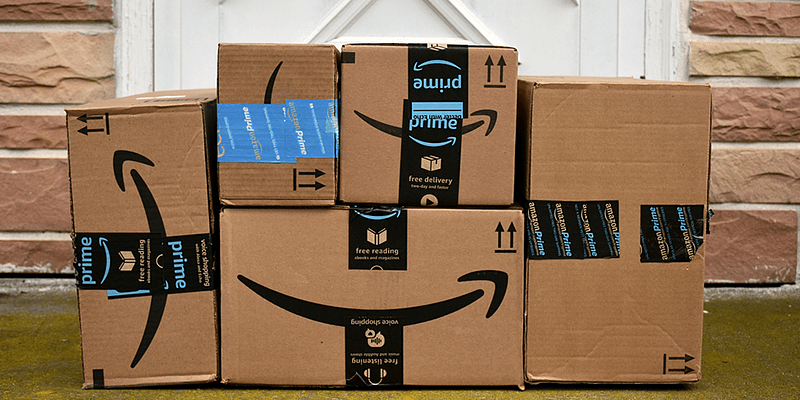Why marketers are suddenly drifting towards OTT platforms for a long run
The lockdown has led to a spurt in consumption of content on OTT platforms and ad marketers have been quick to seize the opportunity to reach audiences that were beyond the realm of traditional marketers.
The global pandemic has created a drastic impact across industries. It has changed the way we live and work. Businesses are switching modes of operation to adapt to the changing times, and now there is a flurry of new business decisions and undertakings.
That said, ad marketers too are making a shift from traditional entertainment platforms and drifting towards OTT platforms to capitalise on the new landscape that emerges following the worldwide lockdown. Let us take a look at the forces in play, and shed light on this sudden transition towards the OTT platforms.
Spike in media consumption following the implementation of lockdown measures
In India, lockdown measures have been put in place since the 25th of March. People were asked to stay confined to their homes, which gave rise to a sudden spurt in media consumption.
The reason was obvious. People shifted to social media to catch up with the world around and, most importantly, access entertainment and content through OTT platforms.
Marketers have been quick to spot this transition, and take action accordingly to capitalise on the same.
Recent data from various sources indicate that ad insertions on OTT platforms increased one-fold in April as opposed to March. To be specific, the number of ad insertions in March was 16000, while 33000 was the figure in the month that followed.
This was a sharp increase from the month of February when the ad insertion count stood at 11000. The streaming OTT platforms in question included the likes of Eros, MX Player, Zee5, Sony Liv, Viu, VOOT, and YuppTV.
OTT platforms attract the heaviest traffic as they are the habitats of viewers
Compared to the past, more and more people today are opting for OTT services. More than half of any given population uses one or two OTT services, and people spend an insane amount of hours on an OTT platform per week. A study finds that the average person spends more time on OTT platforms than on driving, socialising, or any other pastime pursuits.
The recent past has witnessed the rise of numerous OTT outlets with attractive services and features. Developers are aware of the taste and preference of the audience and capitalise on the same to pull maximum viewership.
In other words, demographics, age groups and tastes are duly factored in. Take, for instance, OTT outlets like Netflix and Amazon Prime that feature countless content to watch for any viewer based on one’s age and preference.
OTT: a dynamic arena with surging viewers’ engagement
This is where viewers are engaged the most. The sea of content and options are something to drown in and indulge in one’s craze for entertainment. Viewers are no longer bound by the limitation they experience while watching television. With the advent of OTT outlets, it is possible for viewers to binge-watch a favourite show, series, drama or documentary.
As the contents being played are handpicked by the viewers, there is a room for undivided attention. This, in turn, results in a viewership engaged with advertising. That said, a study reveals that OTT viewers are more likely to tune in to an ad, and 98% of video ads are being watched on average.
Numerous studies assert that this can give a fillip to advertising. Moreover, a study conducted by MAGNA confirmed that video ads on a given OTT platform are 67% more successful per exposure at inducing purchase desire than ads on broadcast or cable TV.
A new value proportion for marketers
OTTs unveil a pool of opportunities for capturing the target audience. Marketers start valuing OTTs to reach out to remote audiences as many people have cut the cord and turn away from linear TV.
This departing class of viewers has migrated to OTT devices and streaming-oriented services such as Netflix, Disney+ and Roku. With these audiences becoming unreachable for the traditional marketers, the key to reaching out to them is by leveraging OTT.
Final thoughts
As things stand, the media landscape is heavily fragmented. But this is an opportunity in disguise for marketers who can tap the potential of OTTs. As more and more platforms are coming to the forefront enabling audiences to opt for the content that aligns with their taste and preference, a string of opportunities are awaiting the marketers to initiate fruitful connections with meaningful messages.
The value in question is ad relevance, which is one of the top three advantages marketers derive from OTT, alongside campaign optimisation and outreach of remote audiences.
Down the line, this consumer behaviour and technology trends may witness a change vis-à-vis OTT. But there is a high probability that the ad spends will catch up and continue to go strong.
(Disclaimer: The views and opinions expressed in this article are those of the author and do not necessarily reflect the views of YourStory.)












![[Weekly funding roundup] Investments remain low but sentiment is strong](https://images.yourstory.com/cs/2/f08163002d6c11e9aa979329348d4c3e/Weeklyimage-1577460362436.png)